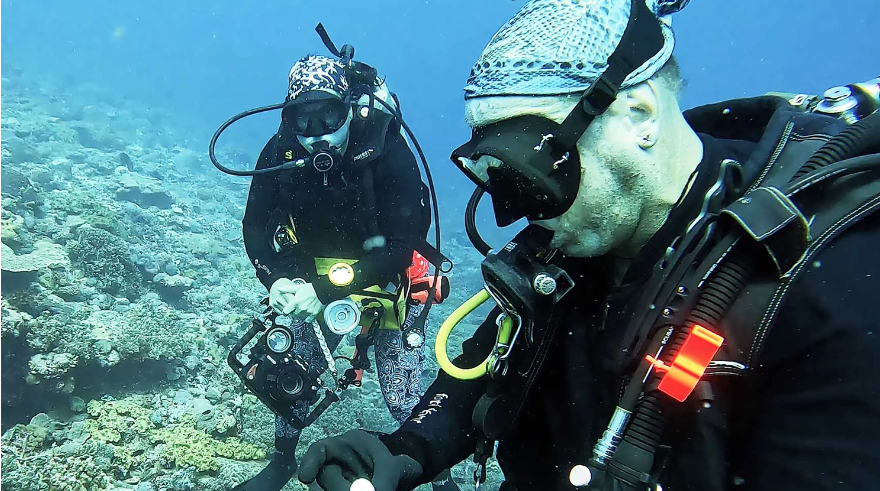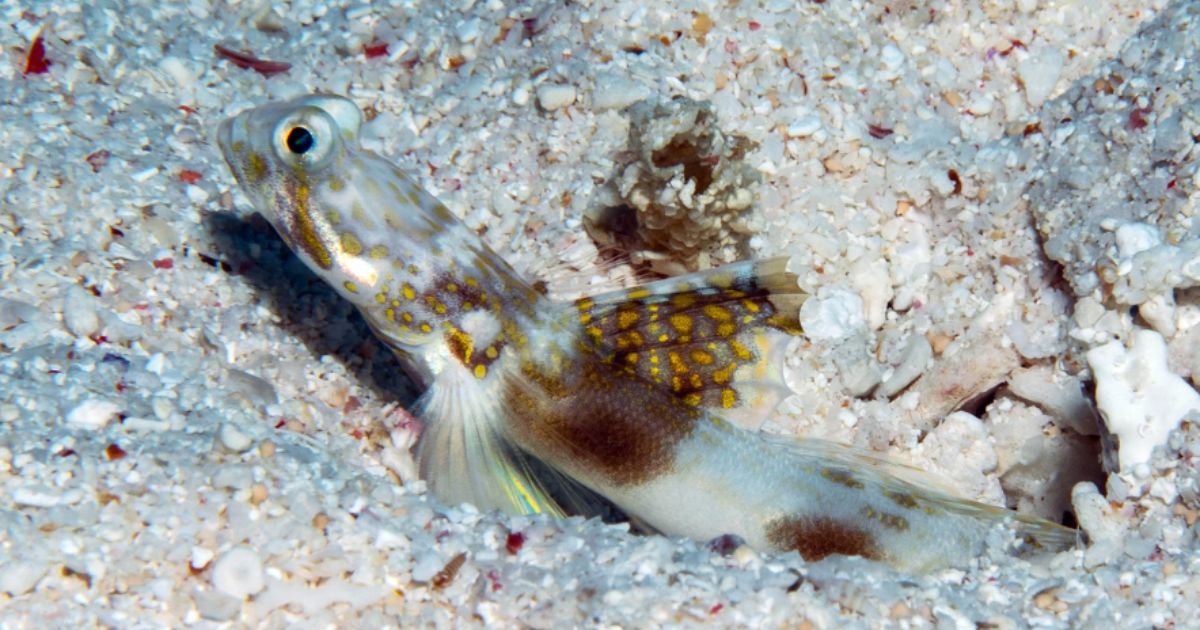At a time when marine life is disappearing from the world’s oceans, researchers are celebrating the discovery of a new species of coral reef fish in the southern waters of the Great Barrier Reef.
Named the Lady Elliot Shrimp Goby, the previously unknown fish was found as part of a University of the Sunshine Coast-led project that is mapping the changing biodiversity on and around Lady Elliot Island, a tiny coral cay at the southern end of the Great Barrier Reef.
The research team is now tasked with the complicated process of confirming that up to seven other unidentified marine creatures they found during their underwater surveys – including dwarf and pygmy gobies and damselfish—are also new to science.
“This is a significant, exciting discovery,” says marine biologist and co-author Dr. Chris Dudgeon, one of the researchers working on the collaborative Leaf to Reef project, part of the Great Barrier Reef Foundation’s Reef Islands Initiative that aims to protect critical habitats in the world's largest coral reef system.
The Lady Elliot Shrimp Goby (Tomiyamichthys elliotensis) is described in a paper released in the Journal of the Ocean Science Foundation. Small and white, with brown spots, yellow-orange bands and a large sail-like first dorsal fin, it was first sighted in a sand burrow that it shares with a pair of alpheid snapping shrimps.
“It's been a while since a ‘never recorded anywhere before’ fish has been described from the Great Barrier Reef,” Dr. Dudgeon said.
“While the Great Barrier Reef is a much-studied ecosystem, the last completely new species to be described was a grouper found in the deep sea in 2019, which is where most new discoveries come from. To find a new fish species in the shallows on a reef, in plain sight is unique.”
The scientists believe the Lady Elliot Shrimp Goby is likely to be present throughout the Capricorn-Bunker reefs and potentially widespread throughout the whole Great Barrier Reef.
More New Species to be Uncovered
The researchers say the discovery generates more questions and speculation – including how many more new species are waiting to be uncovered.
Fish taxonomist and Vice President of Conservation International’s Asia-Pacific Marine Programs Dr. Mark Erdmann, who also co-authored the paper, said most of the potentially new species uncovered at Lady Elliot Island were gobies—frequently overlooked by divers and marine scientists due to their small size and cryptic behaviors.
"Nonetheless, a close look at these fishes reveals a subtle beauty in their color patterns which often rivals that of their more conspicuous cousins on the reef like butterflyfishes or parrotfishes,” said Dr. Mark Erdmann.
 Fish taxonomist Dr. Mark Erdmann makes a potential new fish species found in coral reefs around Lady Elliot Island is securely kept in a sample vial for analysis back on the land. (Image credit: University of the Sunshine Coast)
Fish taxonomist Dr. Mark Erdmann makes a potential new fish species found in coral reefs around Lady Elliot Island is securely kept in a sample vial for analysis back on the land. (Image credit: University of the Sunshine Coast)
Safeguarding the Reef
UniSC Marine Biologist Associate Professor Kathy Townsend says the potential new discoveries highlight the importance of the Leaf to Reef project that she leads.
“New species research is critical to identify ecosystems most in need of protection, so too is mapping how the island’s biodiversity is changing due to species drift, allowing us to measure the impact of climate change and act to safeguard against it,” she said.
Since 2020, a team of scientists has been compiling a comprehensive baseline of all vertebrate species—birds, turtles, sharks, fish, reptiles, and mammals—living on or around Lady Elliot Island. Studies include tagging sea turtles and tracking manta rays, along with bird counts that have uncovered the world’s oldest recorded red-tailed tropic bird and identified 14 new migrant species that can now be found on the island.
“Another key part of our research is understanding connections within and between coral reef habitats and the species that live there—from microscopic algae all the way up the food chain to sharks and manta rays—and how human actions may be impacting these.”
Funding for the study was provided by the Reef Islands Initiative, a Great Barrier Reef Foundation program, supported by Lendlease, the Australian Government’s Reef Trust, the Queensland Government, and the Fitzgerald Family Foundation. Lady Elliot Island Eco Resort also provided significant support throughout the study.
Great Barrier Reef Foundation Managing Director Anna Marsden says Lady Elliot Island is a critical habitat and refuge for over 1,200 species of marine life.
“We’re proud to have pioneered this important research through our Reef Islands Initiative which is establishing a network of climate change arks that will provide refuge for the Great Barrier Reef’s marine life," she said.
“This exciting discovery of the Lady Elliot Shrimp Goby further highlights the importance of protecting the ecosystems that provide a safe home for our Reef’s amazing animals against the impacts of climate change.”



